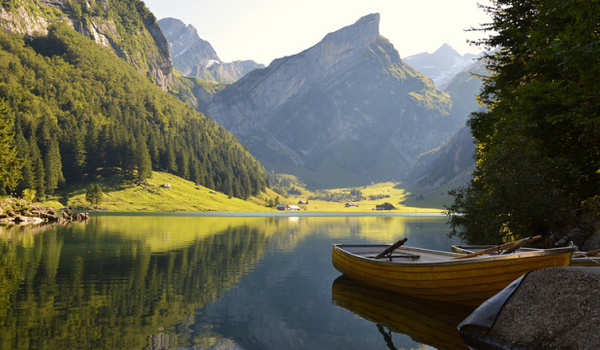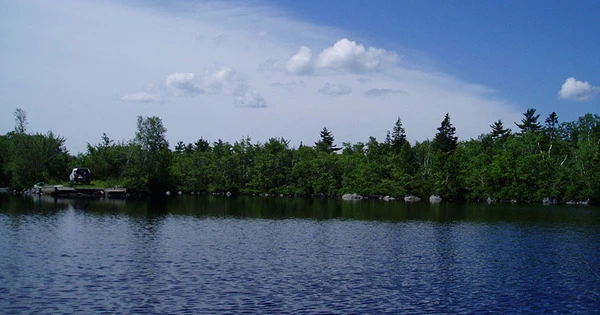As intense heatwaves grip the United Kingdom, Spain, France, and Portugal, with temperatures reaching 40 degrees Celsius at times, as well as parts of North America and Asia, lakes all over the world are feeling the heat from climate change, which is causing a cascade of ecological and environmental issues.
Northern lakes are thought to be the most sensitive to environmental change, but research shows that the effects of climate change can affect any of the world’s more than 100 million lakes. Reader R. Iestyn Woolway of Bangor University in Wales, Associate Professor Sapna Sharma of York University, and Distinguished University Professor John Smol of Queen’s University reviewed and synthesized available studies on freshwater lakes from around the world to create a cohesive picture of how climate change is threatening lakes.
The researchers discovered that the effects of climate change on lakes are frequently cumulative. Warmer water temperatures cause changes in stratification regimes, drops in dissolved oxygen, an increased risk of cyanobacterial algal blooms, and habitat loss for native cold-water fish. It has the potential to impact not only water quality and quantity, but also cultural and recreational activities, as well as local economies.
“Climate change has far-reaching social and ecological consequences,” says Sharma of York’s Faculty of Science. “However, the impacts of climate change, combined with other environmental pressures, are often little understood, and their significance has not been appreciated at a global level. There’s still a lot of work to be done.”
The ecological consequences of climate change coupled with the impacts of extreme climate events are already occurring in lakes globally and will continue to do so in the future, often without warning or time to adapt.
R. Iestyn Woolway
Warmer air temperatures can have an impact on winter ice cover in northern lakes. Ice loss is one of the most visible effects of climate change on lakes, as it can increase winter evaporation rates and water temperatures, resulting in a variety of physical and chemical effects, including increased salinity. The global mean annual evaporation of lakes is expected to increase by 16% by the end of the century. Furthermore, lower precipitation levels can have a significant impact on lake levels.
“The ecological consequences of climate change coupled with the impacts of extreme climate events are already occurring in lakes globally and will continue to do so in the future, often without warning or time to adapt,” says Woolway. “The results of these kinds of changes have been felt in lakes from Algonquin Park in Ontario to Lake Chad in Africa, the English Lake District in the U.K. to Lake Mead in the United States.”
Declines in water levels can be severe in some regions. Historically ranked as one of the largest lakes in Africa, Lake Chad, which borders Chad, Cameroon, Niger, and Nigeria, has shrunk considerably because of decreases in local precipitation and discharge from its catchment, as well as increased evaporation.

“Events such as an earlier summer season can also cause mismatches in fish spawning and foraging, which can have far-reaching consequences across the food web. Although many cottagers and campers would welcome a “longer summer,” such weather conditions increase the risk of algal blooms, particularly cyanobacterial blooms, which can have far-reaching ecological consequences and even make drinking water toxic “Smol says
Some of the effects of climate change include lakes losing oxygen, which is necessary for fish and other aquatic species. Cyanobacterial blooms can exacerbate this deoxygenation.
“Algal blooms can block sunlight from reaching the deeper waters and bacterial decomposition of sedimented algae can lead to a decrease in oxygen for deep-water fish and other aquatic life,” says Woolway. “In addition, episodic storms can cause nutrients to suddenly wash into lakes and foster the development of cyanobacterial blooms.”
A decline in the availability of safe drinking water caused by harmful algal blooms is considerably worse when combined with a reduction in water quantity. In 2014, a Cyanobacteria bloom in Lake Erie shut down the water supply in Toledo, Ohio, while a massive toxic cyanobacterial bloom in Lake Taihu, China, shut down the water supply for two million people for a week in Wuxi city
“Reports of algal blooms in Ontario have not only increased, but have been reported as late as November, which was not typically the case in previous years,” Sharma says. “These blooms may also have an impact on tourism and lakeside property values.”
Algonquin Park banned overnight camping on remote and nutrient-poor Dickson Lake seven years ago due to health concerns caused by cyanobacterial blooms. According to a sediment-based study, these blooms are new to the lake, and no comparable events have occurred in the last century, but that is changing.
Warmer water temperatures, algal blooms, earlier onset, and longer periods of thermal stratification, combined with lower dissolved oxygen concentrations can have important cumulative and potentially negative effects on aquatic organisms, such as fish.
“The effects of climate change also interact synergistically with multiple environmental stressors exacerbating problems with water quantity and quality, including salinization, contamination, and the spread of invasive species,” says Smol. “As humans can’t survive without water, a better understanding of how climate change affects lake function is needed along with recognition of early warning signals.”
The researchers hope that recent technological advances, such as remote sensing and environmental DNA, combined with a shift away from traditional silos will allow them to better understand lake responses in the future.
For the United Nations’ Sustainable Development Goal of equitable access to clean water to be realized by 2030, it will be critical to include diverse voices from researchers around the world, including those from the Global South, as well as cross-pollination of ideas across disciplines.





